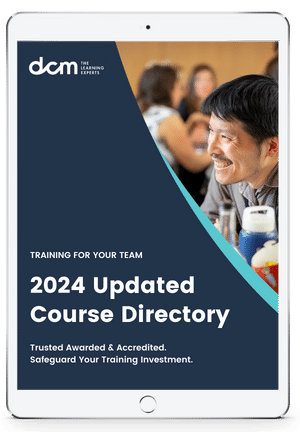Robert Frost wrote, “Two roads diverged in a wood, and I—I took the one less traveled by, and that has made all the difference.” But unfortunately, not every decision is as simple as “Let’s just take this path and see where it goes,” especially when you’re making a decision related to your business.
Whether you manage a small team or are at the head of a large corporation, your success and the success of your company depend on you making the right decisions—and learning from the wrong decisions.
Use these decision-making process steps to help you make more profitable decisions. You'll be able to better prevent hasty decision-making and make more educated decisions when you put a formal decision-making process in place.
Defining the business decision-making process
The business decision-making process is a step-by-step process allowing professionals to solve problems by weighing evidence, examining alternatives, and choosing a path from there. This defined process also provides an opportunity, at the end, to review whether the decision was the right one.
7 decision-making process steps
Though there are many slight variations of the decision-making framework floating around on the Internet, in business textbooks, and in leadership presentations, professionals most commonly use these seven steps.
1. Identify the decision
To make a decision, you must first identify the problem you need to solve or the question you need to answer. Clearly define your decision. If you misidentify the problem to solve, or if the problem you’ve chosen is too broad, you’ll knock the decision train off the track before it even leaves the station.
If you need to achieve a specific goal from your decision, make it measurable and timely so you know for certain that you met the goal at the end of the process.
2. Gather relevant information
Once you have identified your decision, it’s time to gather the information relevant to that choice. Do an internal assessment, seeing where your organization has succeeded and failed in areas related to your decision. Also, seek information from external sources, including studies, market research, and, in some cases, evaluation from paid consultants.
Beware: you can easily become bogged down by too much information - facts and statistics that seem applicable to your situation might only complicate the process.
3. Identify the alternatives
With relevant information now at your fingertips, identify possible solutions to your problem. There is usually more than one option to consider when trying to meet a goal—for example, if your company is trying to gain more engagement on social media, your alternatives could include paid social advertisements, a change in your organic social media strategy, or a combination of the two.
4. Weigh the evidence
Once you have identified multiple alternatives, weigh the evidence for or against said alternatives. See what companies have done in the past to succeed in these areas, and take a good hard look at your own organization’s wins and losses. Identify potential pitfalls for each of your alternatives, and weigh those against the possible rewards.
5. Choose among alternatives
Here is the part of the decision-making process where you, you know, make the decision. Hopefully, you’ve identified and clarified what decision needs to be made, gathered all relevant information, and developed and considered the potential paths to take. You are perfectly prepared to choose.
6. Take action
Once you’ve made your decision, act on it! Develop a plan to make your decision tangible and achievable. Develop a project plan related to your decision, and then set the team lose on their tasks once the plan is in place.
7. Review your decision
After a predetermined amount of time—which you defined in step one of the decision-making process—take an honest look back at your decision. Did you solve the problem? Did you answer the question? Did you meet your goals?
If so, take note of what worked for future reference. If not, learn from your mistakes as you begin the decision-making process again.
Source: Lucidchart
Inhouse Tailored Training for Your Team
We provide training programs that are developed by industry, for industry. Our range of programs can be delivered in a way that suits the needs of your business to offer your employees learning that is accessible and flexible.
We add value to your business by providing specialised, flexible and scalable training that meets your training needs. As your workforce grows and evolves, our globally certified and industry-validated learning solutions can assess, train and qualify your employees. For more information on how we can help please visit the in-house training page.
Membership, Stay Connected. Stay Relevant.
Completing a program is a point-in-time exercise that delivers huge value, but there is a next step to maintaining the currency of your skills in the ever-evolving professional world.
Membership is the next step.
A unique platform, membership is designed to ensure that you are in tune and up-to-date with the latest tools, trends and developments. Being a member provides just-in-time training and continuous professional development, and an exclusive and evolving content library informed by subject matter experts and industry leaders.








